Road safety education with fun & games
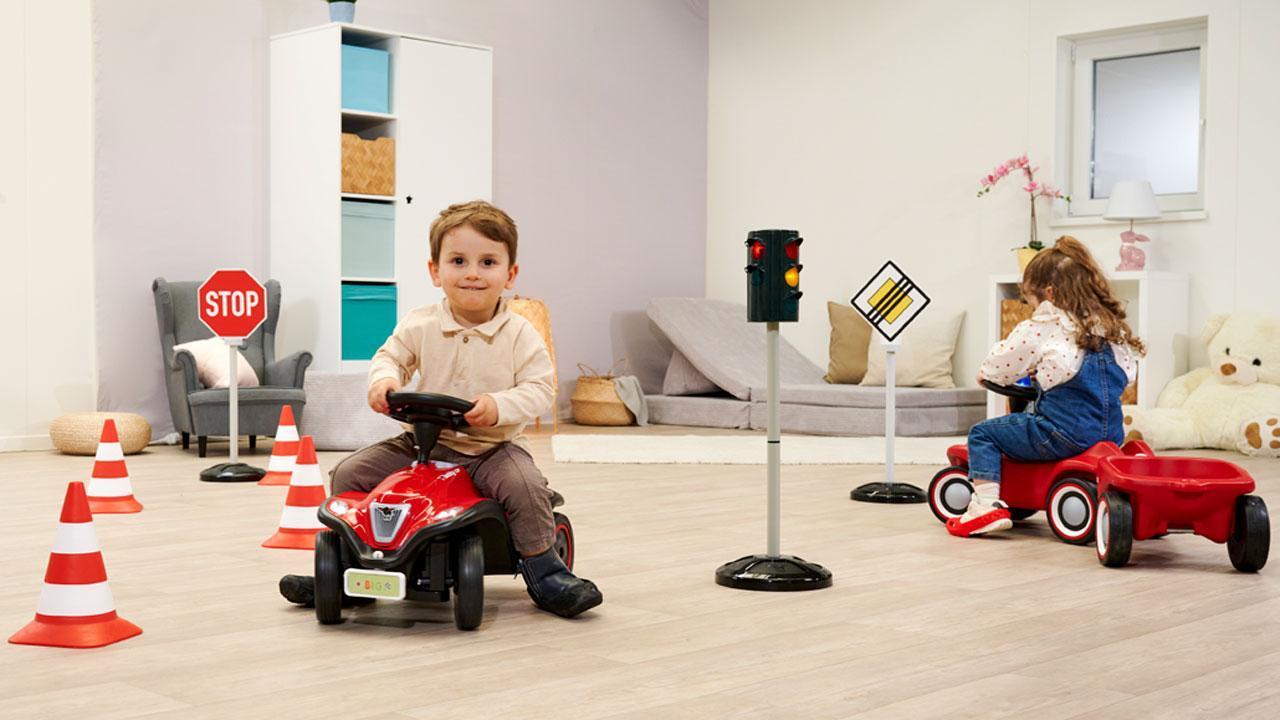
-
By
Vanessa M.
Road safety education through movement games and BIG children's vehicles
While we adults are more than aware of the importance of road safety, children cannot yet fully grasp the potential dangers that road traffic can pose. It is therefore all the more important to make them aware of this and familiarize them with the correct way to behave in traffic. It is rarely a good idea to approach this important issue in purely theoretical terms. This is because most children quickly lose interest when they are confronted with rules in the dry. It is much more promising to tackle road safety education with movement games.
In the following, we will show you the possibilities that movement toys open up in this area and provide you with ideas for child-friendly road safety education in kindergarten, elementary school and at home.
What is road safety education?
The term road safety education encompasses educational measures that prepare children for safe participation in road traffic. Although children are of course at most passengers in motorized vehicles, they still move around in traffic on foot, on a scooter or on a bike. It is therefore extremely important to train them accordingly.
Road safety education - be it traffic lessons in kindergarten and school or training by parents at home - includes not only teaching traffic rules but also practising correct behavior and developing the necessary skills. In summary, the following points can be described as central components and at the same time as objectives of road safety education with children:
Understanding the rules: The children know and understand the basic traffic rules.
Safety awareness: They understand how important road safety is.
Sense of responsibility: The children are able to takeresponsibility for themselves and other road users in traffic.
Independence: They are able to move safely and independently in traffic.
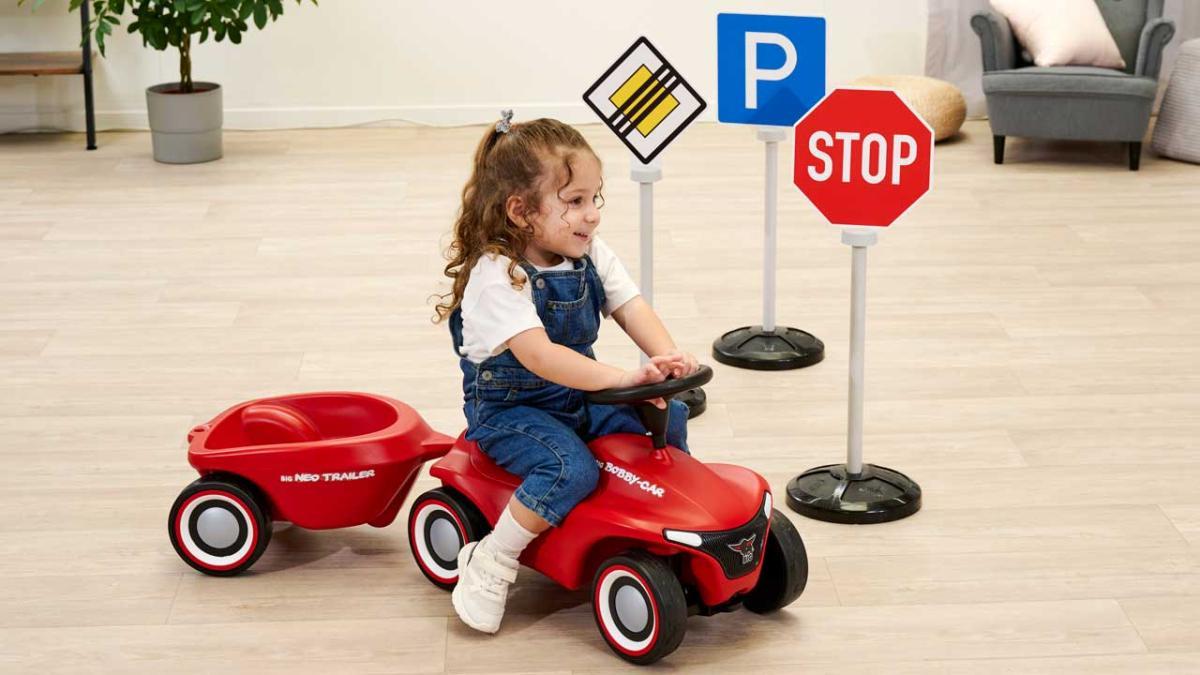
The importance of road safety education for children
Despite the seriousness of the matter, road safety education must of course be child-friendly andappropriate tothe age of the children. Children of kindergarten and primary school age in particular are in the midst of a rapidly progressing development. In order to achieve the greatest possible effect, road safety education in elementary school should therefore differ from that in kindergarten:
Road safety education in kindergarten
To ensure that teaching children in kindergarten about safe road safety bears fruit, it must be structured in a playful way. In addition, it must not overtax the children in terms of content. You should therefore not try to explain complex traffic rules, such as the right of way. However, you can teach simpler road rules to small children in an age-appropriate way, preferably through movement games for road safety education.
Use outdoor and garden toys, such as a sandpit, as movement toys for toddlers. This creates a playful and active setting in which you can draw the children's attention to the topic of traffic. For example, you can let the kids draw roads in the sandpit, which they can then fill with crosswalks and sidewalks drawn in the sand. They then get play figures and try out with you where they can move safely and which areas are reserved for vehicles.
Alternatively, the well-known game "Green light" can be used in kindergarten and preschool for traffic education to explain the basic principle of traffic lights. The children move freely through the area until the game leader calls out "red light". The children then have to freeze in place until the "green light" is called out to break the freeze. Of course, the game works just as well if the children are sitting on bobby cars and can look at the light of a real traffic light. This not only makes for a lot more fun, but also helps them to internalize the meaning of the red light of the traffic light.
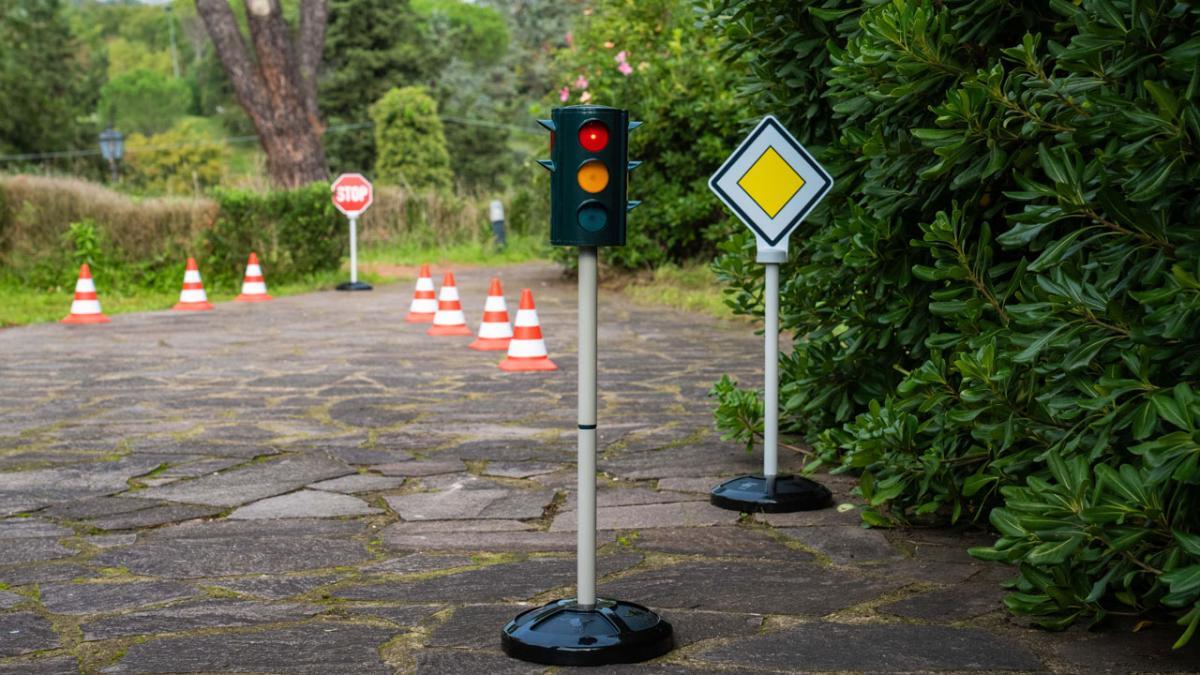
Traffic signs are also ideal as a first introduction to traffic rules. The colorful signs can easily be integrated into games and are also suitable as coloring pictures. The kids can try to come up with their own traffic signs. Perhaps: "Caution! Unicorns on the road"? 🦄✨
Road safety education in elementary school
Compared to kindergarten age, traffic behavior training in elementary school can go much deeper. Now it's time for "learning by doing" - but not in real traffic at first, of course! You can put the children in simulated traffic situations to reinforce the knowledge they have learned about traffic rules and safe behavior. This way, they can get to grips with road traffic in complete safety.
For targeted road safety education on bicycles, you can send kids who are fit to ride through a jointly created bicycle course. Draw roads with chalk on the asphalt, integrate crosswalks, print out traffic signs and place a child with a red and a green color card as traffic lights at the side of the road. You can also set up pylons as a slalom course. As not all children will probably be able to ride a bike at the time of the traffic education in year 1, it is a good idea to equip them with toy cars and excavators or simply let them take part as pedestrians.
Movement games in road safety education for children
Movement games and movement toys for indoor and outdoor use turn road safety education with children into an experience that combines playing and learning. If you don't yet have any ideas on how you can creatively design road safety education with movement games, we would like to give you some suggestions:
Use of BIG children's vehicles in road safety education
No vehicles, no traffic! That's why it makes a lot of sense to integrate children's vehicles into road safety education. With the BIG Bobby Car, other ride-on cars or even balance bikes, road safety education for toddlers picks up speed. Similar to the aforementioned bicycle course, you can also create a self-made road environment for the movement toy from the age of one or two.
Although the vehicles are wonderful exercise toys for outdoors, most of them can also be used indoors. So road safety education doesn't have to be canceled when it rains! 🌧️☔
Plan small routes through the home, declare certain sections to be "play zones" where you have to drive at a snail's pace, demarcate parking areas with masking tape on the floor and put up traffic signs or even traffic lights. To make the playful practical part of road safety education even more exciting, a child can slip into the role of a policeman or policewoman with a trowel and cap and strictly monitor whether all drivers are adhering to the rules they have learned.
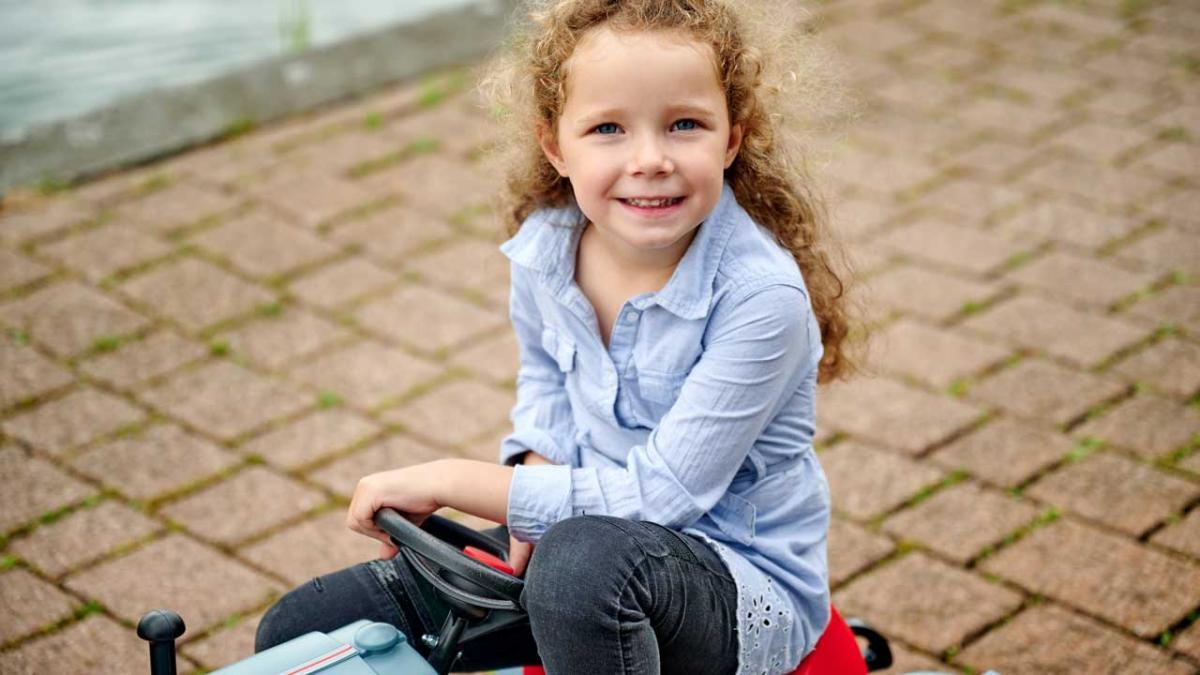
If the traffic education play course is set up outdoors, you can also let slightly older kids ride along on pedal tractors. Using authentic models, such as the Eicher diesel children's tractor, you can then explain directly how to behave if a tractor comes towards you on the narrow country lane outside the town. 🚜🌳
Use of toy cars in road safety education
The alternative to ride-on children's vehicles are toy cars that are controlled by children by hand. These are particularly useful when the weather outside is bad and there is not enough space in the home for an indoor course. With these handy vehicles, you can easily recreate various traffic situations in a space-saving way and then think together about what the correct behavior might be in each situation.
You can use a carpet with a road network drawn on it for this. If you don't have such a carpet, you can take large sheets of paper, glue them together if necessary, lay them out on the floor and paint them with roads, signs and crosswalks. The game with the toy vehicles becomes even more realistic if you play traffic noises in the background. Howling engines, horns and the odd siren provide an authentic soundscape and round off the educational traffic game perfectly.
In principle, such movement games for traffic education work with almost all toy cars. However, the learning field expands with the versatility of the vehicle fleet, meaning that if you not only have cars, but also an excavator and a wheel loader, for example, you can clearly explain the special rules that apply to particularly heavy and wide vehicles to your child.
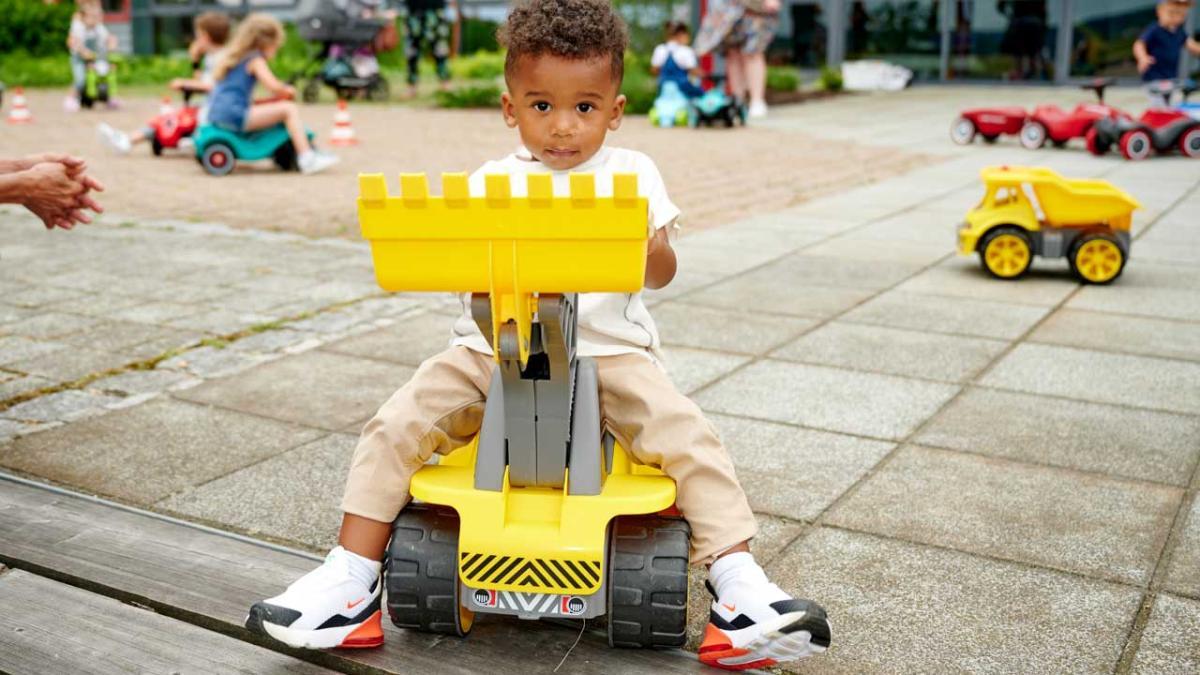
Conclusion: The importance of play and exercise in road safety education with children
Road safety education is an area of learning that contributes significantly to your child's safety and should therefore not be neglected. By organizing traffic lessons in a creative and playful way in kindergarten, at school or at home, you awaken your child's thirst for knowledge and create the conditions for the positive development of their understanding of traffic and safety awareness. For this purpose, you can use movement toys, such as those available in the BIG Shop - so that your child can learn for life through play! 🫶

